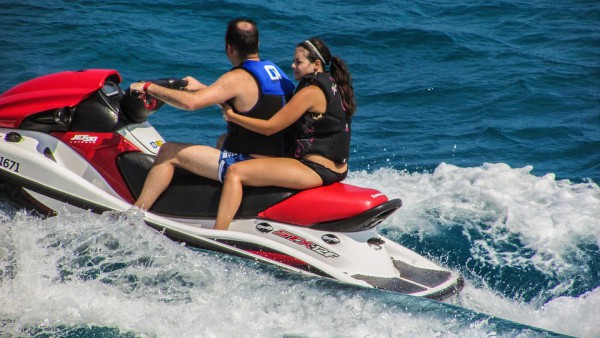Do PWCs go far enough in mitigating risk?
A recent spate of lawsuits against personal watercraft manufacturers begs the question, can more be done to mitigate the risk of internal orifice injury?
In light of a recent spate of lawsuits against personal watercraft (PWC) companies, including Yamaha, Kawasaki and Bombadier Recreational Products, we explore whether or not PWC manufacturers are doing enough to ensure the safety of their customers.
The recent lawsuits have been focussed on PWCs causing internal orifice injuries, whereby hydrostatic damage is caused to a passenger’s vagina, anus, rectum or perineum via the jet stream created by the PWC. While these injuries may vary in severity, in some instances they have been known to be fatal.
Such cases are not new to the industry, which begs the questions, why have PWCs changed so little over the last 20 years, and what can be done to ensure owners, guests and crew are more aware of the dangers moving forward?
In the owner’s manual for the Yamaha SUV 1200 a simple warning reads, “Strong streams of water from the jet nozzle can be dangerous, and can result in serious injury when directed at the body orifices (rectum and vagina).” The solution, it suggests, is to wear a wetsuit to protect the body, and not to board the vehicle if the operator is applying the throttle. Both are sensible suggestions, but, do they go far enough?
The warning, which is considered adequate by the necessary bodies, is rather ambiguous, albeit accurate. What the warning fails to appreciate is the frequency with which users fall off the back of PWC’s, directly into the jet nozzles stream. The argument here is that merely offering warnings as a remedy for accidents is insubstantial.
While the design of PWCs cannot be altered to the point of impracticality, might there be small design solutions that may at least reduce the risks associated with internal orifice injury? Could the seating be designed in such a way that it is harder to slip directly into the jet stream? In the rarefied world of superyachts, where safety and customisation is a prerequisite for many, is there opportunity to develop alternatives?
One thing is for certain, owners and guests will continue not to wear wetsuits or use safety equipment, so the onus is on the industry to educate and innovate in equal measure in order to mitigate risk.
NEW: Sign up for SuperyachtNewsweek!
Get the latest weekly news, in-depth reports, intelligence, and strategic insights, delivered directly from The Superyacht Group's editors and market analysts.
Stay at the forefront of the superyacht industry with SuperyachtNewsweek
Click here to become part of The Superyacht Group community, and join us in our mission to make this industry accessible to all, and prosperous for the long-term. We are offering access to the superyacht industry’s most comprehensive and longstanding archive of business-critical information, as well as a comprehensive, real-time superyacht fleet database, for just £10 per month, because we are One Industry with One Mission. Sign up here.
NEW: Sign up for
SuperyachtNewsweek!
Get the latest weekly news, in-depth reports, intelligence, and strategic insights, delivered directly from The Superyacht Group's editors and market analysts.
Stay at the forefront of the superyacht industry with SuperyachtNewsweek




